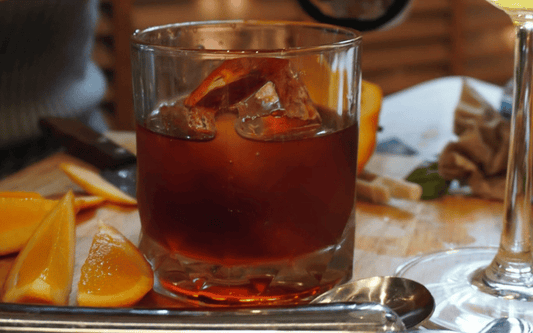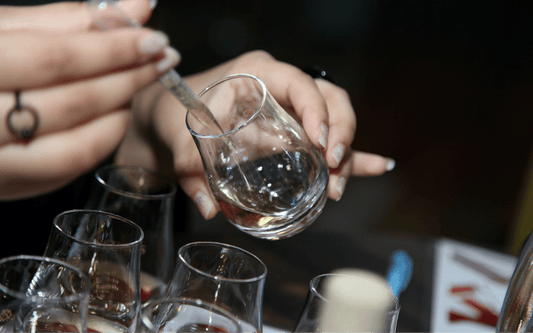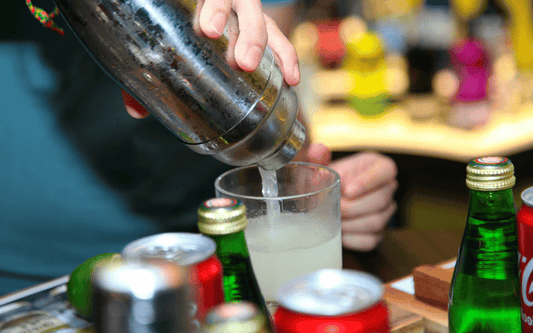WINE

Wine, an ancient and storied beverage, has captivated human civilization for millennia. Its creation is an art, and its consumption is a celebration of flavors, culture, and tradition. This article explores the rich history of wine, its diverse varieties, the intricate production process, and the prominent wine-producing regions around the globe.
The History of WineThe history of wine dates back thousands of years, with evidence of its production and consumption found in ancient Mesopotamia, Egypt, and Greece. Archaeological discoveries suggest that wine was being produced in the South Caucasus (modern-day Georgia) as early as 6000 BCE. In ancient Egypt, wine was an important part of religious ceremonies and was often buried with the dead for use in the afterlife.
The Greeks and Romans played significant roles in the spread of viticulture (the cultivation of grapevines) and winemaking techniques across Europe. The Romans, in particular, were instrumental in establishing vineyards in regions that are now famous for their wine production, such as France, Spain, and Germany.
Throughout the Middle Ages, monasteries became centers of wine production, preserving and refining winemaking techniques. The Renaissance and subsequent centuries saw the rise of wine as a staple of European culture and commerce. Today, wine is produced and enjoyed all over the world, each bottle carrying with it a story of its origin and the people who crafted it.
Wine production dates back over 8,000 years, originating in the fertile lands of modern-day Georgia and Iran. It quickly spread throughout the Mediterranean region, becoming a symbol of hospitality, celebration, and religious rituals in civilizations such as ancient Greece and Rome. Over time, wine has evolved from a simple fermented grape juice to a beverage celebrated for its diversity in grape varieties, winemaking techniques, and regional distinctions.
The Winemaking Process
The journey from vine to bottle involves several critical stages:
-
Grape Cultivation: Wine begins in the vineyard, where grape varieties such as Cabernet Sauvignon, Chardonnay, Pinot Noir, and Riesling thrive in diverse climates and soils.
-
Harvesting: Grapes are carefully picked at optimal ripeness, influenced by factors like sugar levels, acidity, and phenolic ripeness.
-
Crushing and Pressing: Grapes are crushed to release their juice, which is then pressed to separate the juice from the skins and seeds.
-
Fermentation: Yeast converts grape sugars into alcohol and carbon dioxide during fermentation. This process can take place in stainless steel tanks, oak barrels, or concrete vats, each contributing unique flavors and textures to the wine.
-
Aging and Maturation: Some wines undergo aging in oak barrels or stainless steel tanks to develop complexity, while others are bottled young to preserve freshness and fruitiness.
-
Blending and Bottling: Winemakers may blend different grape varieties or wines from various vineyard lots to achieve desired flavor profiles before bottling.
Categories of Wine
Wine is categorized into several types based on grape variety, style, and origin:
-
Red Wine: Made from dark-colored grape varieties with skins included during fermentation, producing wines ranging from light-bodied to full-bodied with flavors of red and black fruits, spices, and earthy notes.
-
White Wine: Produced from green or yellow grapes with minimal skin contact, resulting in wines that range from crisp and citrusy to creamy and full-bodied, with flavors of apple, pear, citrus, and floral aromas.
-
Rosé Wine: Made from red grapes with limited skin contact, creating a spectrum of pink hues and flavors from delicate strawberries to vibrant red fruits, with a refreshing acidity.
-
Sparkling Wine: Known for its effervescence, sparkling wines are produced using methods like Méthode Champenoise (traditional method) or Charmat method, resulting in lively bubbles and flavors ranging from crisp apples to toasted brioche.
-
Dessert Wine: Sweet wines made from grapes affected by noble rot (Botrytis), frozen on the vine (Icewine), or fortified with spirits (Port), offering intense sweetness and complex flavors of dried fruits, honey, and nuts.
Wine is produced in many regions around the world, each with its own unique terroir (the natural environment in which a particular wine is produced, including factors such as soil, climate, and topography) and grape varieties. Some of the most renowned wine-producing regions include:
France: Home to some of the world's most famous wine regions, including Bordeaux, Burgundy, Champagne, and the Rhône Valley. French wines are celebrated for their quality and diversity.
Italy: Known for its rich winemaking history, Italy produces a wide range of wines from regions such as Tuscany, Piedmont, Veneto, and Sicily. Italian wines are known for their variety and food-friendliness.
Spain: Spain is famous for its Rioja and Ribera del Duero red wines, as well as its sparkling Cava and fortified Sherry from Jerez.
United States: The US has emerged as a major wine producer, with California's Napa and Sonoma Valleys leading the way. Other notable regions include Oregon's Willamette Valley and Washington State.
Australia: Known for its bold and flavorful wines, particularly Shiraz from the Barossa Valley and Cabernet Sauvignon from Coonawarra.
Argentina: Famous for its Malbec wines from the Mendoza region, Argentina has become a leading producer of high-quality wines.
Chile: Known for its excellent value wines, Chile produces notable Cabernet Sauvignon, Carmenere, and Sauvignon Blanc.
South Africa: With a winemaking tradition dating back to the 17th century, South Africa is known for its Chenin Blanc, Pinotage, and robust red blends.
How to Choose Wine
Selecting the right wine involves considering personal preferences, occasion, and food pairings:
-
Grape Variety: Choose wines based on preferred grape varieties such as Cabernet Sauvignon, Chardonnay, Sauvignon Blanc, or Pinot Noir, each offering distinct flavors and characteristics.
-
Terroir: Explore wines from different wine regions, each imparting unique qualities influenced by climate, soil, and winemaking traditions.
-
Food Pairing: Pair wines with complementary flavors and textures, such as bold reds with grilled meats, aromatic whites with seafood, and sparkling wines with appetizers and desserts.
-
Budget and Occasion: Consider the price range and occasion when selecting wines, from everyday sippers to special-occasion bottles worthy of celebration.
Popular Wine Cocktails
While wine is often enjoyed on its own, it also serves as a base for delightful cocktails:
-
Wine Spritzer: A refreshing mix of wine (usually white or rosé) with sparkling water or soda, garnished with citrus slices.
-
Sangria: A fruity Spanish punch made with red or white wine, fruit juices, chopped fruits, and sometimes a splash of brandy or liqueur.
-
Kir: A classic French apéritif made with white wine (typically Aligoté) and a splash of Crème de Cassis or other fruit liqueurs.
-
Wine Cooler: A simple cocktail blending wine (red, white, or rosé) with fruit juice, soda water, and fresh fruit slices.
Wine's allure lies in its diversity, from the sun-soaked vineyards where grapes flourish to the cellars where winemakers craft their art. Whether exploring the robust reds of Bordeaux, the crisp whites of Burgundy, or the effervescent delights of Champagne, wine enthusiasts embark on a journey of discovery, tasting, and appreciation. Each bottle tells a story of terroir, tradition, and craftsmanship, inviting us to savor moments and create memories. Raise a glass to the timeless joy and beauty found in every sip of wine. Cheers!




